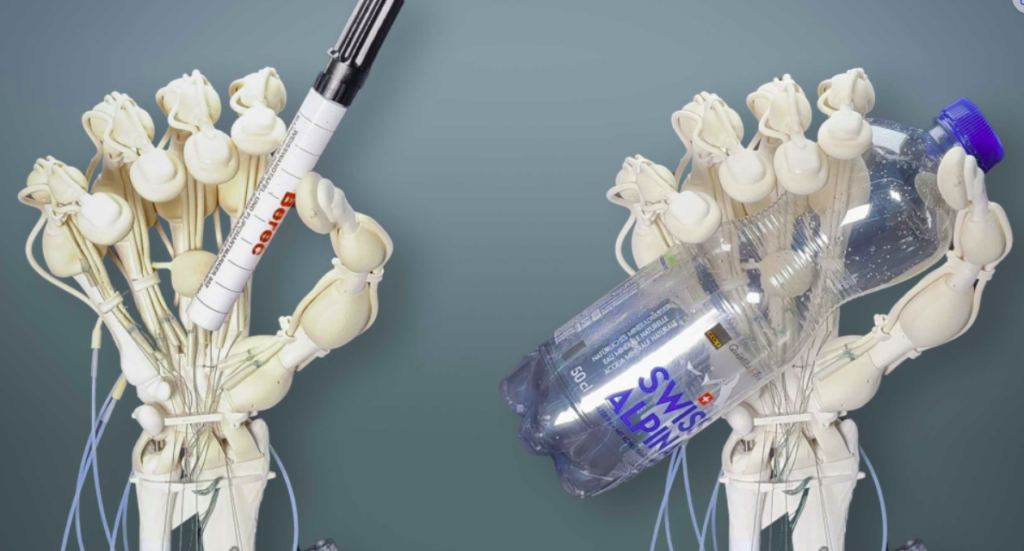
Scientists have created a supple yet agile substitute for the rigid, restricted-range grippers seen on modern robots. By utilizing a 3D printer, non-traditional materials, and an innovative manufacturing technique, they have produced a robotic hand that resembles the skeletal structure of humans and may be as agile as our own.
The group consists of engineers from Inkbit, an additive manufacturing offshoot from MIT, and the Swiss Federal Institute of Technology (ETH) Zurich. Collectively, they observed that although robot grippers are fairly advanced, they hardly equal the practical and literal flexibility provided by human hands. While soft, tentacle-like grippers fill the void left by hard, claw-like grippers, they aren’t useful in most common situations. Instead, they struggle to pick up things with irregular shapes.
The engineers write in a study for the journal Nature, “The aim is to create actuated systems with high spatial resolutions and complex material arrangements that range from elastic to rigid.” “Such complicated systems are difficult to manufacture using traditional manufacturing processes.”
The answer? Create a brand-new 3D printing technique for creating flexible robotics parts. VCJ, or vision-controlled jetting, is the name of the technique. Engineers are prevented from printing with softer materials by this technique, known as mechanical planarization, whereas traditional 3D printing smooths imperfections after each printed layer. Because of this, modern 3D printed robots are typically constructed from stiff, quickly drying polyacrylates.
VCJ uses a 3D laser scanner to detect and compensate for surface defects during manufacture, as an alternative to scraping the flaws off the surface. Every time the scanner finds an uneven area, it determines how to fill that area by adjusting the next layer. According to Wojciech Matusik, co-founder of Inkbit, the outcome is a fabrication technology that makes up for its inherent shortcomings with “pinpoint accuracy.” This results in a product that can be bent and recovers to its former state rather rapidly when combined with elastic, slow-curing thiolene polymers.
The team was able to create a robotic hand that mimics the skeleton and connective tissues of a person thanks to this approach. Nineteen “tendons” in the hand enable dexterity in the fingers and wrist. The hand can “feel” what it’s touching and grasp objects with the proper amount of force thanks to contact pads and pressure sensors.
The group is not going to stop there. They have also created a heart-shaped pump and a moving robot that resembles a dog with six legs using VCJ.
“We hope that VCJ will create new opportunities to build complex machines or objects faster and more often than they could have been made,” they write. “Our freeform fabrication method allows scientists and engineers to construct hybrid soft-rigid structures, systems, and robotics at the millimeter to decimeter scale more quickly by expanding their design space.”